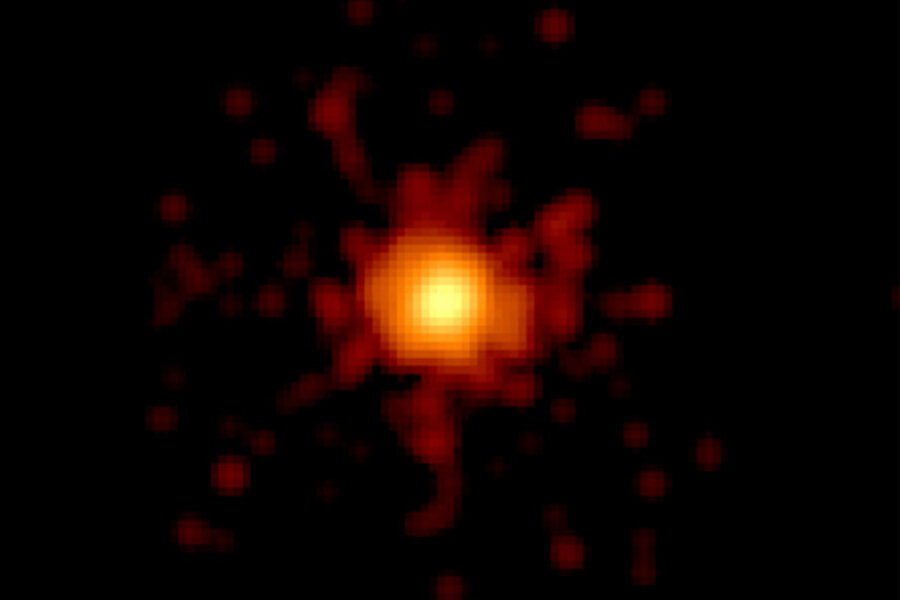Record-breaking star explosion is most powerful ever seen
Loading...
Two NASA space telescopes have captured what appears to be the most powerful star explosion ever detected, a cosmic event so luminous that scientists dubbed it "eye-wateringly bright" despite being 3.6 billion light-years from Earth.
On April 27, NASA's Swift Space Telescope and the Fermi Gamma-ray Space Telescope spotted the highest-energy gamma-ray burst (GRB) — an explosion of a massive star in the last stage of its life — ever before seen.
NASA scientists combined the observations into a video animation of the historic gamma-ray burst to illustrate the surprising brightness of this star explosion.
"We have waited a long time for a gamma-ray burst this shockingly, eye-wateringly bright," Julie McEnery, a project scientist for the Fermi Gamma-ray Space Telescope at NASA's Goddard Space Flight Center in Greenbelt, Md., said in a statement. "The GRB lasted so long that a record number of telescopes on the ground were able to catch it while space-based observations were still ongoing."
One of the gamma-rays emitted during the eruption — seen in the constellation Leo — was three times more energetic than any other gamma-ray burst recorded by Fermi's Large Area Telescope (LAT), the instrument on the spacecraft responsible for detecting these kinds of explosions.
The gamma-ray burst (named GRB 130427A) was also the longest ever recorded, NASA officials said.
"The GeV [energy] emission from the burst lasted for hours, and it remained detectable by the LAT for the better part of a day, setting a new record for the longest gamma-ray emission from a GRB," NASA officials added.
Gamma-ray bursts are the brightest explosions yet observed in the universe.
"Astronomers think most [gamma-ray bursts] occur when massive stars run out of nuclear fuel and collapse under their own weight," NASA officials said in a statement. "As the core collapses into a black hole, jets of material shoot outward at nearly the speed of light."
Swift's detection of this burst was delayed. The satellite was moving between cosmic targets at the time of the eruption, but the spacecraft captured the explosion less than a minute after it began. Swift also aided astronomers in placing the gamma-ray burst closer to Earth than most other star explosions of its kind, NASA officials said.
"This GRB is in the closest 5 percent of bursts, so the big push now is to find an emerging supernova, which accompanies nearly all long GRBs at this distance," Goddard's Neil Gehrels, principal investigator for Swift, said in a statement.
Scientists are hoping to find a supernova within the area of the explosion in order to trace the gamma-ray burst back to its origins.
Observatories on the ground are keeping an eye on GRB 130427A's area of the sky to locate the supernova by mid-May.
Follow Miriam Kramer on Twitter and Google+. Follow us on Twitter, Facebookand Google+. Original article on SPACE.com.
- Star Quiz: Test Your Stellar Smarts
- Top 10 Strangest Things in Space
- Record Breaking Gamma-Ray Burst Captured By Fermi | Video
Copyright 2013 SPACE.com, a TechMediaNetwork company. All rights reserved. This material may not be published, broadcast, rewritten or redistributed.







